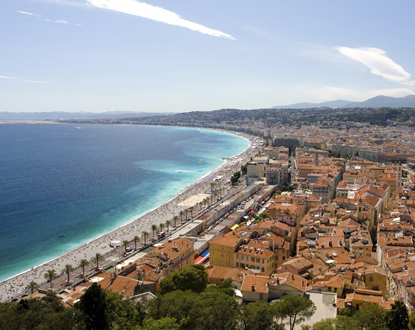After six consecutive months above seasonal normals in temperature, the month of July returned to a certain freshness… in the heart of summer.
The occasionally substantial rains have significantly slowed the surface drought, while the situation remains unchanged at the groundwater level.
July had, however, started well with beautiful sunny days and moderate warmth at the beginning of the month.
The first half of the month is generally in line with norms, both in terms of temperature and sunshine, even as a relative drought made its return.
But things changed from the 16th with the establishment of a depression between Scotland and Norway and the retreat of the Azores high in the middle of the Atlantic.
Consequences: a cool and humid west-northwest flow set in for about ten days, causing temperatures to drop and bringing occasionally heavy rains.
It took until the last two days of the month to see more summery conditions re-establish over France.
The average temperature for the month of July shows a deficit of 1.3 degrees at the national level.
You have to go back to July 2000 and 1993 to find equivalent coolness, and to July 1981 to find even cooler conditions.
It is, however, interesting to note that while July months as cool have become rare (three in thirty years), they were much more common in the past (ten in thirty years between 1950 and 1980!).
No cold records were broken this year, despite sometimes particularly low values, both in minimum temperatures at the beginning of the month (5.9 degrees on the 3rd in Mulhouse, not far from the record of July 2, 1960: 5.1 degrees), and in maximum temperatures (14.4 degrees on the 19th in Melun, the record remains 12.4 degrees on July 1, 1948).
Precipitations were significantly in surplus in most regions, with a little more than 150% of the normal at the national level. The Sarthe, Haute-Normandie, Picardie, Ardennes, Lorraine, and the south of Brittany are exceptions with a slight rainfall deficit (48 mm in Evreux instead of 53 mm normally, for example).
The most remarkable surpluses were recorded in the Bouches-du-Rhône with 7 to 8 times more rain than usual: 85 mm in Marseille for a normal of 13 mm, this is a new record that surpasses the 78 mm of July 1924. This Marseille rain fell in three events, on the 13th, 19th, and 27th, receiving 22, 16, and 43 mm respectively.
Obviously, the sunshine figures are mediocre, especially towards the northeast where the deficit was marked: 153 hours in Metz, not far from the record 143 hours of July 1998, and far from the normal 225 hours.
The western regions were a bit more favored, even showing a slight surplus in areas like Biarritz and Calvados to the Gulf of Saint-Malo up to the Côtes d’Armor: 205 hours in Caen for a normal of 203 hours.
Without being catastrophic (pleasant first half), July 2011 was very mixed and marked by a cool and humid period from the 16th to the 28th, thereby spoiling the holidays of many July vacationers.
Paradoxically, while the surface drought fades, the deeper issue remains: summer rains are directly absorbed by the plants, or quickly run off into streams.
We will have to wait for the next autumn and especially winter to hope to replenish the groundwater with significant precipitation.


